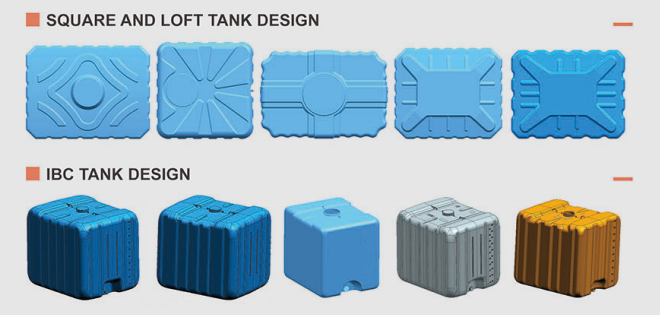Extrusion blow molding is one of the primary methods for forming blow-molded products.
The blow molding process must adhere to the following key points:
(1) Processing Temperature and Screw Speed
To achieve a smooth and uniform extrusion of the plastic while avoiding overloading the screw system, it is advisable to utilize lower processing temperatures and higher screw speeds whenever possible to enhance efficiency.
(2) Molding Air Pressure
The air pressure used in extrusion blow molding typically ranges from 0.2 to 1.5 MPa, primarily determined by the viscosity of the molten plastic. A lower molding air pressure can be employed for plastics with low viscosity, such as nylon and polyethylene, which flow and expand easily. Conversely, higher pressures are required for high-viscosity materials like polyoxymethylene and polycarbonate, which exhibit poorer flow and expandability. Additionally, the molding pressure is influenced by the size and thickness of the product; generally, larger containers with thicker walls necessitate greater molding pressures, while smaller containers with thinner walls require less. Specific adjustments should be made through practical operations, incrementally increasing or decreasing the pressure by 0.1 MPa until the optimal product is achieved.

(3) Blow-up Ratio
The blow-up ratio, defined as the product size ratio to the mold size, is a critical parameter in the blow molding process. When the mold size and quality are fixed, an increase in product size results in a larger blow-up ratio. While increasing the blow-up ratio can lead to material savings, it also results in thinner product walls, complicating the molding process and reducing the strength and rigidity of the product. Conversely, a blow-up ratio that is too small reduces the effective volume of the product, increases the occurrence of flash, thickens the walls, prolongs cooling time, and raises costs.
Typically, the blow-up ratio ranges from 2 to 4 times, with a ratio of 1:2 being particularly suitable, as it ensures a more uniform wall thickness. For certain specialized blow-molded products, a smaller blow-up ratio may be necessary. Determining the appropriate blow-up ratio requires careful consideration of the specific blow-molded product, and in cases of complex designs, multiple trials may be needed to achieve optimal results.
(4) Mold Temperature And Cooling Time
Regarding mold temperature and cooling time, the plastic preform used in extrusion blow molding is initially at a high temperature, necessitating a specific holding pressure and cooling cycle within the mold. If the mold temperature is too low, premature cooling occurs, making it difficult to form the product and resulting in a lackluster surface finish. Conversely, if the mold temperature is too high, the cooling time is extended, leading to longer production cycles. Insufficient cooling of the preform can result in issues such as deformation upon demolding and excessive shrinkage.
Therefore, the design of the mold, along with parameters such as venting, cooling, and temperature control, is crucial in the extrusion blow molding process, as these factors directly influence the quality of the blow-molded products.
